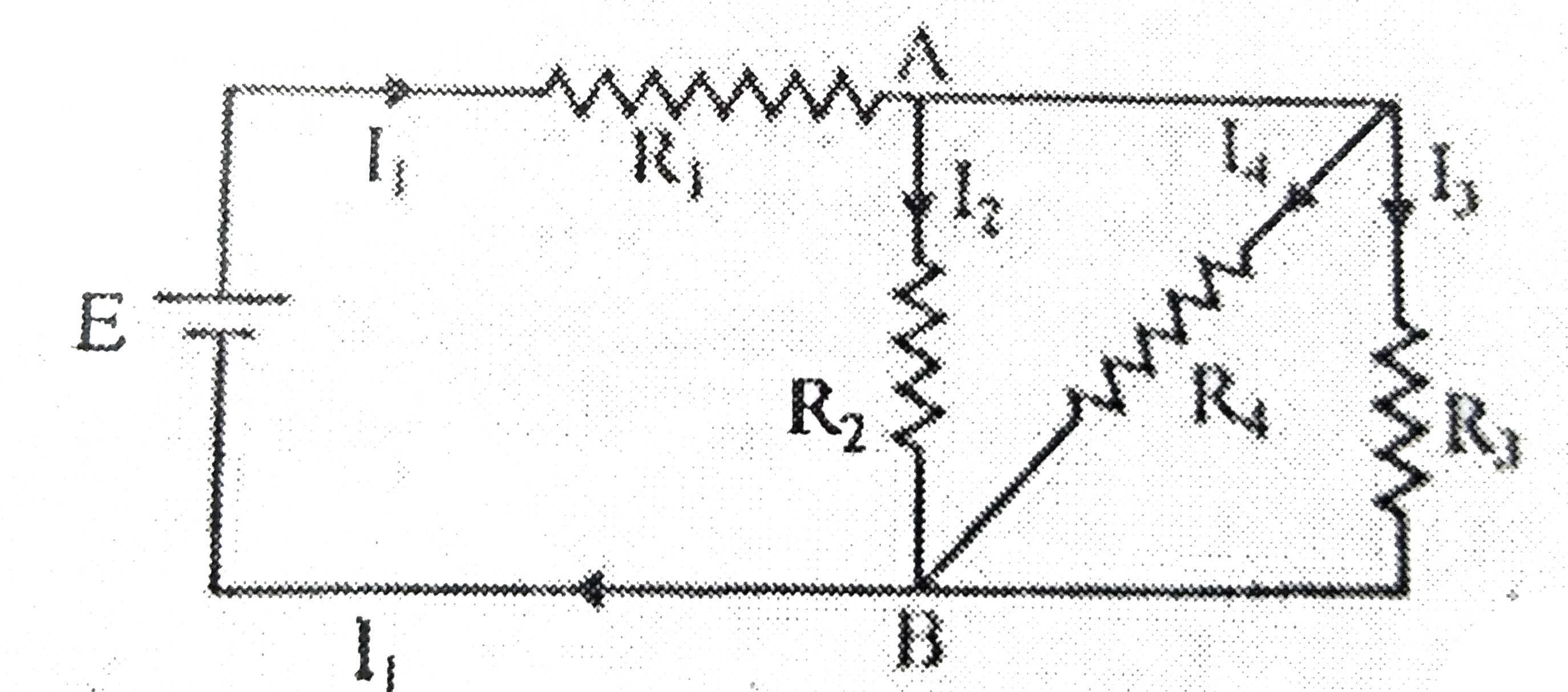A combination of two resisters R1 and R4 are placed in an electrical circuit. In an experimental arrangement, the resistance are measured as R1=(100±3)Ω,R2=(200±4)Ω
The equivalent resistance, when they are connected in parallel, 1RP=1R1+1R2 can be expressed as
(66.7±12)Ω
(66.7±7)Ω
(66.7±4.9)Ω
(6.7±1.8)Ω
The correct Answer is:C
To solve the problem of finding the equivalent resistance RP when two resistors R1 and R2 are connected in parallel, we will follow these steps:
Step 1: Write down the formula for equivalent resistance in parallel
The formula for the equivalent resistance RP for two resistors in parallel is given by:
1RP=1R1+1R2
Step 2: Substitute the values of R1 and R2
Given:
- R1=100±3Ω
- R2=200±4Ω
Substituting these values into the formula:
1RP=1100+1200
Step 3: Calculate 1RP
To calculate 1RP, we need a common denominator:
1RP=2200+1200=2+1200=3200
Step 4: Find RP
Now, take the reciprocal to find RP:
RP=2003Ω
Step 5: Calculate the error in RP
To find the error in RP, we use the formula for the propagation of uncertainty:
ΔRP=RP√(ΔR1R1)2+(ΔR2R2)2
Where:
- ΔR1=3Ω
- ΔR2=4Ω
Substituting the values:
ΔRP=2003√(3100)2+(4200)2
Step 6: Simplify the error calculation
Calculating the terms inside the square root:
(3100)2=910000,(4200)2=(150)2=12500=410000
Thus,
ΔRP=2003√9+410000=2003√1310000=2003⋅√13100
Calculating √13≈3.605:
ΔRP≈200⋅3.605300≈721300≈2.403Ω
Step 7: Final Result
Thus, the equivalent resistance with its uncertainty is:
RP=2003±2.403Ω≈66.67±2.40Ω
Final Answer
The equivalent resistance RP can be expressed as:
RP=66.67±2.40Ω
The formula for the equivalent resistance RP for two resistors in parallel is given by:
1RP=1R1+1R2
Given:
- R1=100±3Ω
- R2=200±4Ω
1RP=1100+1200
To calculate 1RP, we need a common denominator:
1RP=2200+1200=2+1200=3200
Now, take the reciprocal to find RP:
RP=2003Ω
To find the error in RP, we use the formula for the propagation of uncertainty:
ΔRP=RP√(ΔR1R1)2+(ΔR2R2)2
Where:
- ΔR1=3Ω
- ΔR2=4Ω
ΔRP=2003√(3100)2+(4200)2
Calculating the terms inside the square root:
(3100)2=910000,(4200)2=(150)2=12500=410000
Thus,
ΔRP=2003√9+410000=2003√1310000=2003⋅√13100
ΔRP≈200⋅3.605300≈721300≈2.403Ω
Thus, the equivalent resistance with its uncertainty is:
RP=2003±2.403Ω≈66.67±2.40Ω
The equivalent resistance RP can be expressed as:
RP=66.67±2.40Ω
Similar Questions
Knowledge Check
Two resistors of resistances R1=(300±3)Ω and R2=(500±4)Ω are connected in series. The equivalent resistance of the series combination is
A(800±1)ΩB(800±7)ΩC(200±7)ΩD(200±1)ΩTwo resistances R1=100±3ΩandR2=200±4Ω are connected in series . Find the equivalent resistance of the series combination.
A(66.7±1.8)ΩB(66.7±4.0)ΩC(66.7±3.0)ΩD(66.7±7.0)Ω
Two resistor of resistance R1=(6±0.09)Ω and R2=(3±0.09)Ω are connected in parallel the equivalent resistance R with error (in Ω)
View SolutionTwo resistances R and 2R are connected in parallel in an electric circuit. The thermal energy developed in R and 2R are in the ratio
View SolutionShow by a diagram how two resistors R1andR2 are joined in parallel. Obtain an expression for the total resistance of the combination.
View SolutionFor two resistors R1 and R2, connected in parallel, find the relative error in their equivalent resistance. if R1=(50±2)Ω and R2=(100±3)Ω.
View SolutionIn the circuit shown, R1=2Ω,R2=R3=10ΩandE=6V. Work out the equivalent resistance of the circuit and the current in each resistor.

View SolutionYou are given two resistance R1=(4.0±0.1)Ω and R2=(9.1±0.2)Ω. Calculate their effective resistance when they are connected (i) in series and (ii) in parallel. Also calculate the percentage error in each case.
View Solution
